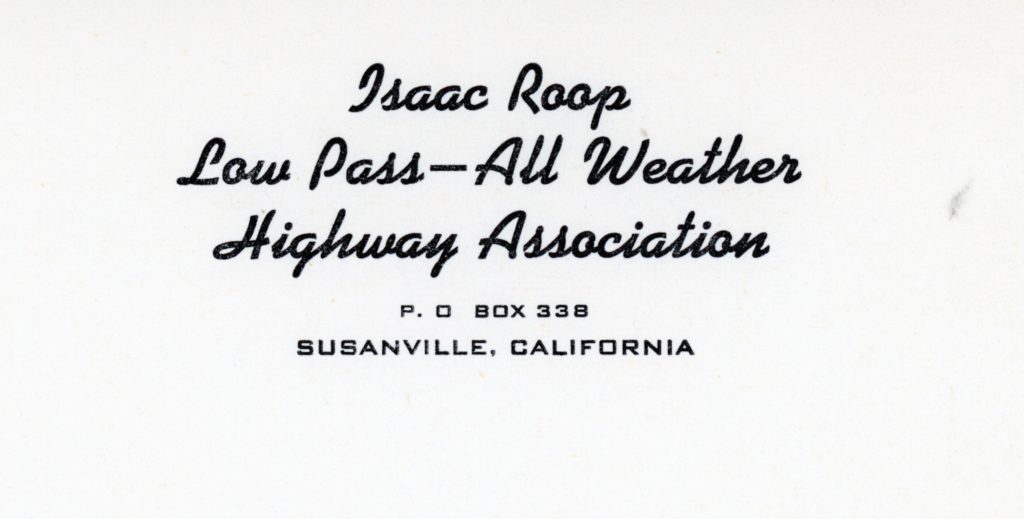
In essence this is one of those instances where history repeats itself. During the 1850s Congress passed several bills for a transcontinental railroad and wagon road to connect California to the Union. Numerous routes were surveyed, though most ended at California’s eastern border, with the assumption the State of California would decide the best route. The Honey Lake-Fredonyer-Deer Creek route was deemed one the best, since there was no high elevation summits to cross, thereby reducing the problems associated with winter, i.e., Donner. In 1859, with the discovery of the Comstock Lode in Nevada was a game changer. Politics and the influence of money the Donner Pass route was selected, a costly one at that.
Fast forward a hundred years later. In June 1956 Congress approved the Federal Highway Act, also known as President Eisenhower’s Interstate and Defense Highways. In 1957, Susanville resident F.W. Loosley saw an opportunity and proposed the Isaac Roop Low Pass All Weather Highway, as a viable alternative to Donner Pass. One of the most obvious was it would reduce construction costs and even more importantly annual maintenance, especially where snow removal was a concern. The proposed Roop Highway would go from Winnemucca, Nevada to Viewland, Lassen County, California via Gerlach. There it would merge initially with U.S. Highway 395 to Johnstonville and then connect with State Highway 36 over Fredonyer to Red Bluff. (This should not be confused with the Winnemucca to the Sea Highway.) It received widespread support in California and Nevada. The wheels of commerce, those along the then Highway 40 put pressure because the proposed interstate would bypass them, and they won.